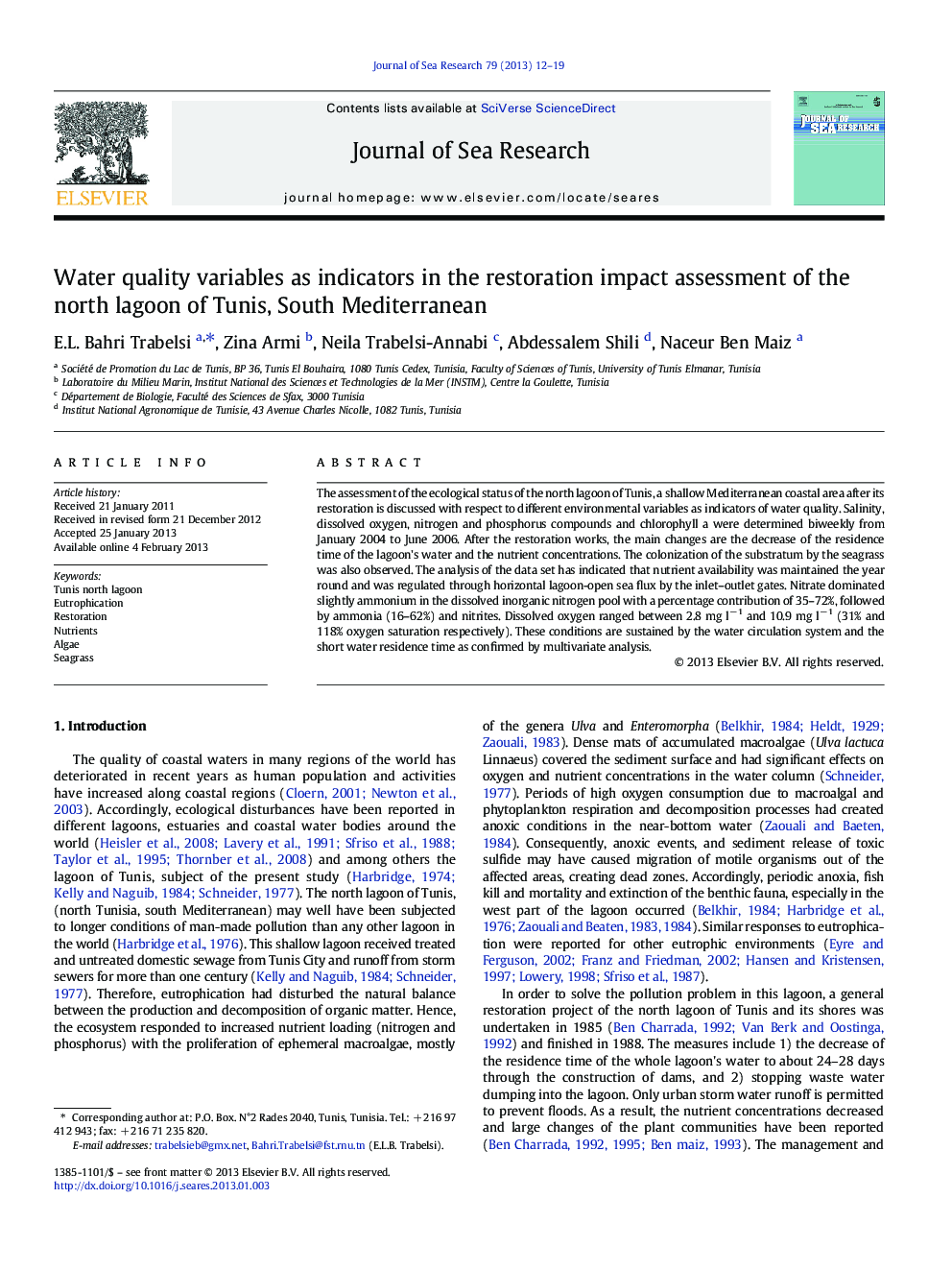| Article ID | Journal | Published Year | Pages | File Type |
|---|---|---|---|---|
| 4549940 | Journal of Sea Research | 2013 | 8 Pages |
The assessment of the ecological status of the north lagoon of Tunis, a shallow Mediterranean coastal area after its restoration is discussed with respect to different environmental variables as indicators of water quality. Salinity, dissolved oxygen, nitrogen and phosphorus compounds and chlorophyll a were determined biweekly from January 2004 to June 2006. After the restoration works, the main changes are the decrease of the residence time of the lagoon's water and the nutrient concentrations. The colonization of the substratum by the seagrass was also observed. The analysis of the data set has indicated that nutrient availability was maintained the year round and was regulated through horizontal lagoon-open sea flux by the inlet–outlet gates. Nitrate dominated slightly ammonium in the dissolved inorganic nitrogen pool with a percentage contribution of 35–72%, followed by ammonia (16–62%) and nitrites. Dissolved oxygen ranged between 2.8 mg l− 1 and 10.9 mg l− 1 (31% and 118% oxygen saturation respectively). These conditions are sustained by the water circulation system and the short water residence time as confirmed by multivariate analysis.
► Water quality monitoring in the north lagoon of Tunis. ► Physico-chemical parameters were recorded on a biweekly time scale. ► Water circulation system allowed a constant flushing of the whole lagoon in a short time. ► Seagrass dominated primary production, whereas phytoplankton has ephemeral blooms.
